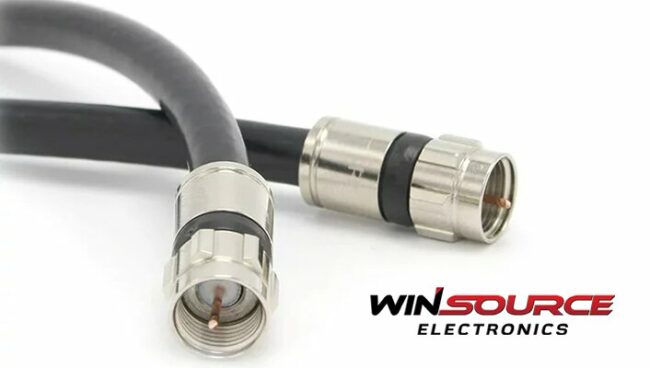
In the field of modern communication, coaxial cable plays a key role as an important transmission medium. It is widely used in applications such as telecommunication networks, cable television and computer networks. This article will delve into the role of coaxial cable and its application in communication to better understand the importance and function of coaxial cable.
Table of Contents
ToggleThe basic principle of coaxial cable
Structure of coaxial cable
Coaxial cable consists of a center conductor, insulation, shield and outer jacket. The center conductor is the transmission medium for electrical signals and is usually made of copper or aluminum. The insulating layer is used to isolate the center conductor and the shielding layer. Common insulating materials include polyethylene (PE) and polyvinyl chloride (PVC). The shielding layer is made of braided metal mesh or aluminum foil, which is used to shield external interference signals. The outermost layer is the jacket, which protects the cable from physical damage and environmental influences.
Principle of signal transmission
Coaxial cables transmit electrical signals through a center conductor. Electrical signals convey information through changes in current in a central conductor. Insulation isolates the center conductor, preventing signal leakage or interference. The shielding layer shields the external electromagnetic interference signal to ensure the integrity of the transmitted signal. The sheath serves to protect the cable from physical damage and the influence of the external environment.
Transmission characteristics
Coaxial cables have some important transmission properties. Among them, impedance is a key parameter, which represents the resistance of the cable to electrical signals. Proper impedance matching minimizes signal reflections and losses. In addition, coaxial cables have low signal attenuation and interference suppression capabilities, enabling signals to maintain better quality over long distances.
Application of coaxial cable in communication
Applications in Telecom Networks
Coaxial cables play a key role in telecommunications networks. It is widely used in fields such as telephone network, broadband access and data transmission. In telephone networks, coaxial cables are used to carry voice signals. In broadband access, coaxial cable is used as the transmission medium to provide high-speed Internet connection. In addition, coaxial cables are also used for data transmission, such as local area network (LAN) and wide area network (WAN).
Applications in Cable TV
Coaxial cable plays an important role in cable television systems. It acts as the transmission medium that carries the television signal from the source to the television. Coaxial cable has larger bandwidth and transmission distance in cable TV, and can transmit high-quality audio and video signals. It supports the transmission of multiple channels and has low signal loss and interference suppression capabilities.
Applications in Computer Networks
Coaxial cables are also widely used in computer networks. In a local area network (LAN), coaxial cables are used to connect computers and network devices, providing high-speed data transmission and network connectivity. Coaxial cable has some unique advantages in computer networking. First of all, it has a large bandwidth, can support high-speed data transmission, and is suitable for large-capacity data transmission needs. Secondly, the signal transmission of the coaxial cable is stable and reliable, has low signal attenuation and anti-interference ability, and can maintain high-quality data transmission. In addition, coaxial cable is relatively simple to install and maintain, and its low cost makes it an ideal choice in some specific scenarios.
Other fields of application
In addition to telecommunications networks, cable TV, and computer networks, coaxial cables have some applications in other fields. For example, in surveillance systems, coaxial cables can be used to transmit video signals, providing high-definition image transmission. In radar and satellite communications, coaxial cables can be used to transmit radar signals and satellite signals to ensure the quality and reliability of signal transmission. In addition, coaxial cables are used in areas such as radio spectrum monitoring, antenna systems and lightning protection.
In conclusion
As an important transmission medium, coaxial cable plays a key role in the field of communication. It has stable and reliable signal transmission characteristics, suitable for long-distance transmission and anti-interference requirements. Coaxial cables are widely used in telecommunications networks, cable television, and computer networks to provide high-quality voice, video, and data transmission. In addition, coaxial cables have important applications in other fields such as surveillance systems, radar and satellite communications. Through a deep understanding of the role and application of coaxial cables, we can better understand its importance in the field of communication and provide a reference for selecting the appropriate transmission medium. With the continuous development and advancement of communication technology, coaxial cables will continue to play an important role in meeting the growing communication needs.

COMMENTS